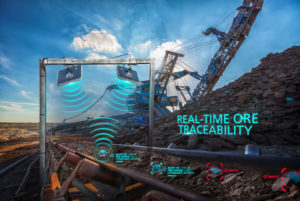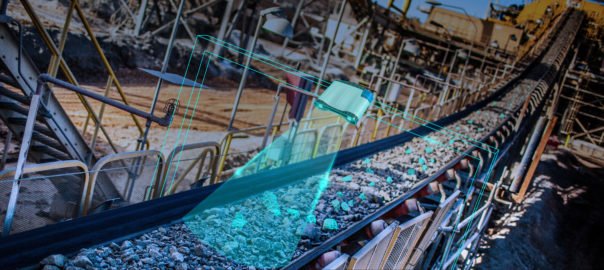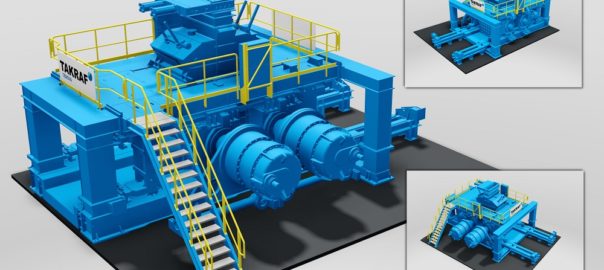Orica’s suite of rock movement, blast fragmentation and digital blast optimisation solutions have been gaining traction of late, with miners across the globe employing or trialling the products as they look to improve mine site performance.
Ahead of the annual Explosives and Blasting feature (to be published in the International Mining July/August 2020 issue), IM spoke with Rajkumar Mathiravedu, Vice President of Digital Solutions at Orica, to get an update on progress with the company’s digital solutions.
Back in Orica’s 2019 full-year results, Orica mentioned it had secured its first customers in Latin America for its ORETrack™ solution, which provides RFID-based tracking of rock movement from blasting operations.
Mathiravedu said these first adopters were recognising the value delivered by the technology, with ORETrack working well in the initial applications.
“We are also continuing to co-develop and expand our ORETrack technology in collaboration with customers in Latin America, with additional customers adopting the ore tracking capability,” he said.

“Further trials are also planned for the near future, including locations in Australia and North America.”
The number of customers taking up Orica’s FRAGTrack™ solution, which provides blast fragmentation data with auto-analysis capability, meanwhile, has been growing in the face of COVID-19 travel restrictions.
Orica carried out its first fully remote installation of FRAGTrack during lockdown in Australia, with a second in Finland and a third one completed in North America recently.
Mathiravedu said a key focus in developing the solution, which captures real-time fragmentation measurement data for downstream unit productivity improvement and tracking of operational performance, was ensuring it was “a plug and play solution” that could be installed and supported remotely.
“We developed rigorous training material and installation instructions and married these with real-time augmented reality capability to remotely guide and support our customers through the implementation,” he said.
“We have found this particularly advantageous during the COVID-19 restrictions, but also this allows our customers to manage the implementation timing to suit their operations.”
An example of this could be the desire for a customer to install FRAGTrack when the shovels are down for maintenance, without having to wait for an Orica specialist to come to the site and install the system.
Reflecting on the recent remote installation achievements, Mathiravedu said: “This proves we have a successful remote release model that customers are valuing during these unprecedented times.”
BlastIQ workflow integration
Fifteen months after the release of its next generation BlastIQ, Orica has now surpassed the 60-site implementation mark of its digital blast optimisation platform.
Mathiravedu said BlastIQ and the company’s ever-growing digital capabilities are designed to improve blast outcomes by integrating insights from digitally connected technologies at every stage of the drill and blast process to drive continuous improvements for its customers.
“Focusing on the needs of our surface mining customers, we have been able to deliver the benefits of cloud-based technology, providing convenience and flexibility for customers to access their blasting data online anywhere, anytime from any device,” he said.
“Customers are also benefitting significantly from digitising their blasting workflows, delivering efficiencies and improved quality control across their blasting operations, resulting in greater visibility of blast inputs and outputs in real time while benefiting from better blast outcomes.”

As an open, secure, and connected digital platform, BlastIQ’s blast-related data is being integrated directly into customers’ mining value chain and remote operation centres via secure cloud-based APIs, Mathiravedu said.
“This is enabling customers to drive better mine-level decisions based on data integrations between our platform and theirs, creating a stronger bond between planning, drilling, blasting, load and haul and processing operations at the site,” he said.
BlastIQ is an inter-operable platform and is being delivered as a Software as a Service product to customers, meaning they receive new functionality, value and features as soon as they are developed, according to Mathiravedu.
“Enhancements are scheduled and developed based on direct feedback and submissions from our customers all around the world to ensure the product evolves to meet the discrete needs of their operations,” he said.
Outside of BlastIQ specifically, Orica has started to deliver digital optimisation services to its customers, according to Mathiravedu.
“State-of-the-art” digital products and advanced data science and analytics, combined with blasting technical know-how and market-leading blasting technologies, enables customers to cover whole of value chain solutions, enabled by blasting, Mathiravedu said.
“Also, using a series of industry 4.0 smart Internet of Things sensors and Edge computing to replace inefficient manual processes, measurement data can be used in real time to improve future mining outcomes based on data science, analytics and machine-learning algorithms to drive continuous improvement of the entire mining value chain.”








